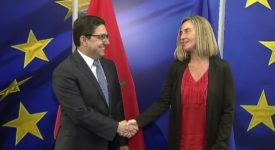Europe’s new cohesion policy for the 2014-2020 period is going to be way different from its previous versions. The new agenda, much influenced by the ongoing economic crisis, will be characterized by a shift from removing disparities among EU regions towards being a more complex instrument for the entire EU. Some observers believe that the aim of the policy will be to lead the EU 2020 strategy towards growth and prosperity for all regions. The law will enter the EU Parliament in November.
The new design of the cohesion is hoped to bring a change in policy management as well. It should motivate regional representatives to think strategically and in a long run rather than focus on the amount of money they can spend in a given time framework. Under the new agenda, policies should be newly complemented by ex-ante conditionality gauging whether ongoing projects are in line with ‘federal’ EU policies. An EU representative summarized the goal: “Be strategic. What result do you want to achieve, by, let’s say, 2020. And try to choose indicators which are explainable to the common citizen.”
The most controversial question of the proposal is a ‘macro-economic stick’ – that is withdrawal of money following ‘a persistent macroeconomic behavior of a country’. A different proposal suggests that part of the money for a particular project should be withheld until a project is successfully operational.
Opponents of the new cohesion plan argue that there is a substantial change going on in the very logic of the program, which might disable some EU regions to deliver on the plan. Moreover, Mr. John Bachtler, an expert on cohesion policy, questions whether the problem of ‘identifying a clear causal chain between allocation of resources, setting of particular objectives, to the outcomes expressed in terms of results” has been resolved. Yet, many observers agree that the focus on strategic thinking and planning has been missing in the past, which is why some of existing programs missed to contribute to a broader ‘EU mission’.
Article Categories:
GREEN & SOCIAL EUROPE






